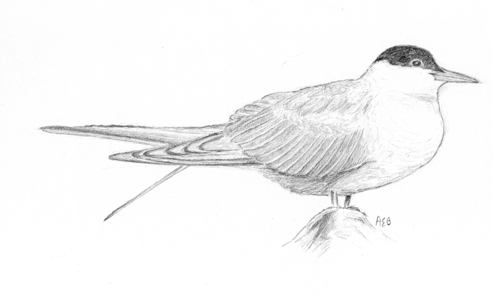Location/Distance
|

Image Drawn by Amelia Bethke
|
|
|
|
Feeding
-
They do not regurgitate to feed young, but instead they bring individual prey items in their bills to the young.
|

Image Drawn by Amelia Bethke |
|
Migration Cues
-
Studies found a pelagic bird (called the Manx shearwater) that is similar to the arctic tern to time migration with fall equinox.
|
|
|

Image Drawn by Amelia Bethke |
|
|
|
 Migrations
Migrations Animal
Animal  Human
Human  Dance/Art
Dance/Art Migrations
Migrations Animal
Animal  Human
Human  Dance/Art
Dance/Art